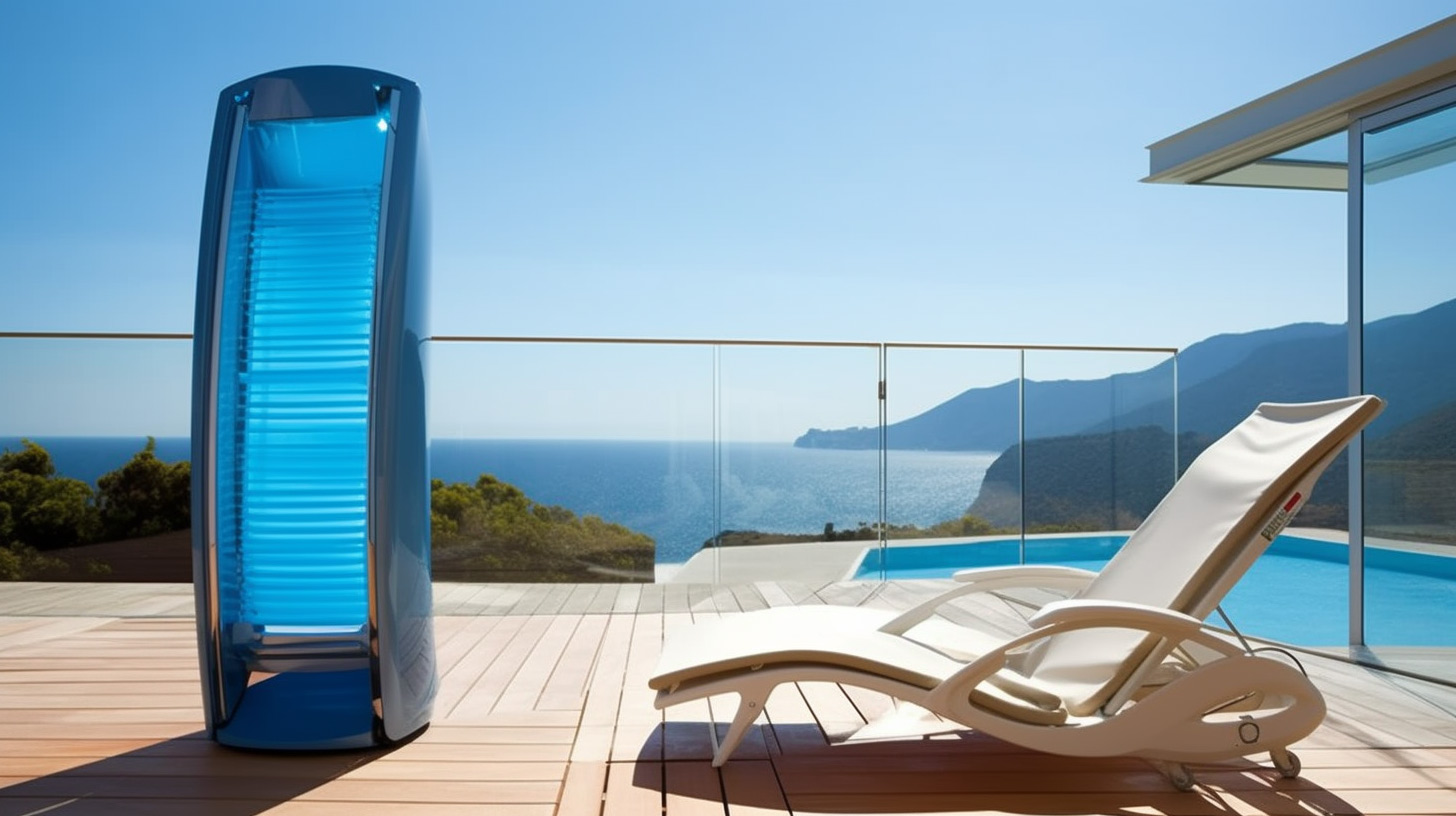When it comes to achieving a sun-kissed glow, two popular options come to mind: sunbathing and using a solarium. However, with growing concerns about skin damage and the risk of skin cancer, it’s crucial to understand which option is safer. In this article, we’ll delve into the topic and compare the potential risks and benefits of sunbathing and solarium use. By considering various factors, we aim to help you make an informed decision while keeping your skin’s health a top priority.
The Science behind Sun Exposure:
Understanding the effects of sun exposure is essential in determining its safety. Sunlight contains ultraviolet (UV) rays, classified into UVA and UVB rays. UVA rays penetrate deep into the skin and contribute to premature aging, while UVB rays primarily cause sunburns. Both types of rays are linked to an increased risk of skin cancer.
Sunbathing: Pros and Cons:
Sunbathing allows you to enjoy natural sunlight and provides a source of vitamin D, essential for bone health. However, prolonged and unprotected sun exposure can lead to various negative consequences. Sunburns, accelerated skin aging, pigmentation disorders, and an increased risk of skin cancer are some of the potential risks associated with sunbathing.
Solarium Use: Pros and Cons:
Solariums, also known as tanning beds, emit artificial UV radiation to simulate sunlight. The controlled environment allows for a regulated exposure to UV rays. While solariums offer a quicker way to achieve a tan, they come with their own set of risks. Overexposure to UV radiation from tanning beds can lead to similar consequences as sunbathing, including an increased risk of skin cancer.
Eating Vitamin D or Sunbathing? Which One is Better for Health?
Understanding the Safety Measures:
Both sunbathing and solarium use can be made safer by implementing certain precautions. These include:
a) Sunscreen: Applying a broad-spectrum sunscreen with a high sun protection factor (SPF) helps shield the skin from harmful UV rays.
b) Time and Intensity: Limiting the time spent in the sun or solarium and gradually increasing exposure can help minimize the risks.
c) Protective Clothing: Wearing clothing that covers the body, wide-brimmed hats, and UV-blocking sunglasses provides additional protection.
d) Skin Type Considerations: Individuals with fair skin are generally more prone to sunburns and require extra caution.
Professional Advice and Alternatives:
Consulting with a dermatologist or a skincare professional is crucial before choosing between sunbathing and solarium use. They can assess your skin type, evaluate any existing conditions, and provide personalized recommendations. Additionally, exploring alternatives like self-tanning lotions, sprays, or bronzing powders can offer a safer option for achieving a sun-kissed look without exposure to harmful UV rays.
The Bottom Line:
In the debate of sunbathing versus solarium use, it is essential to prioritize skin health and safety. Both options come with risks associated with UV radiation, including skin damage and an increased risk of skin cancer. While sunbathing allows for a natural experience and vitamin D synthesis, it requires diligent sun protection measures. Solariums offer controlled exposure but should be used cautiously and sparingly.
Ultimately, the safest choice may vary depending on individual circumstances. However, minimizing exposure to harmful UV radiation and adopting protective measures are key regardless of the method chosen. Remember, maintaining healthy skin is essential for long-term well-being, and a sun-kissed glow should never come at the cost of your health.
Comparison
Understanding UV Exposure:
UV radiation is the primary factor to consider when assessing the safety of sunbathing and solarium tanning. Sunbathing exposes your skin to natural sunlight, while solariums use artificial UV light. It’s crucial to recognize that both natural and artificial UV rays carry risks.
Natural Sunbathing: Benefits and Risks:
Sunbathing offers the advantage of fresh air and vitamin D synthesis. However, prolonged and unprotected exposure to the sun’s UV rays can lead to sunburn, premature aging, and an increased risk of skin cancer. To minimize the risks associated with sunbathing, it is crucial to adopt proper sun protection measures, such as wearing sunscreen, seeking shade during peak UV hours, and using protective clothing.
Solarium Tanning:
Advantages and Disadvantages: Solariums provide controlled UV exposure, allowing individuals to achieve a tan without being dependent on weather conditions. However, it is important to note that artificial UV rays can be intense and may increase the risk of skin damage and skin cancer. Additionally, the misuse of tanning beds, such as excessive exposure or failure to wear protective eyewear, can further escalate the potential risks.
Skin Cancer Risks:
Both sunbathing and solarium tanning carry a risk of developing skin cancer. UV radiation damages the DNA in skin cells, which can lead to the formation of cancerous cells over time. The intensity and duration of UV exposure play a significant role in determining the risk level. Protecting your skin from excessive UV exposure and regularly checking for any suspicious moles or changes in your skin are crucial preventive measures.
Vitamin D Synthesis:
Sunlight is a natural source of vitamin D, an essential nutrient for overall health. When exposed to sunlight, our skin synthesizes vitamin D. However, the amount of UVB radiation needed for adequate vitamin D production is relatively small, and it can be obtained through brief sun exposure on hands, arms, and face. Relying solely on sunbathing or solarium tanning for vitamin D synthesis is unnecessary and can increase the risk of harmful UV exposure.
Prioritizing Skin Health:
Maintaining healthy skin should be a top priority. To achieve a safe and radiant tan, consider alternatives to sunbathing and solarium tanning. Sunless tanning products, such as self-tanning lotions or sprays, offer a risk-free way to achieve a temporary tan. These products contain dihydroxyacetone (DHA), which interacts with the outermost layer of the skin to produce a brown coloration. Embracing these alternatives can help you maintain a youthful appearance while avoiding the potential dangers associated with UV radiation.
Conclusion:
In the quest for a beautiful tan, it’s important to consider the risks and benefits associated with sunbathing and solarium use. This comprehensive comparison has shed light on the potential dangers of UV radiation and highlighted the significance of adopting preventive measures. By making informed choices and prioritizing skin health, you can enjoy a radiant complexion while keeping the risks at bay. Always consult professionals and stay up-to-date with the latest recommendations to ensure the safety of your skin in the pursuit of a sun-kissed glow.
FAQ
Is sunbathing safer than using a solarium?
While both sunbathing and using a solarium carry risks, sunbathing outdoors without proper protection can lead to sunburn, premature aging, and an increased risk of skin cancer. Solariums, on the other hand, expose your skin to artificial UV radiation, which can also increase the risk of skin damage and skin cancer. It is crucial to exercise caution and adopt proper sun protection measures in both scenarios to minimize the potential risks.
Can solarium tanning provide a safer alternative to sunbathing?
Solarium tanning may offer a controlled environment for tanning, but it is important to note that artificial UV rays can still damage the skin and increase the risk of skin cancer. Misuse of tanning beds, such as excessive exposure or failure to wear protective eyewear, can further escalate the potential risks. Considering alternative methods like self-tanning lotions or sprays can provide a safer option for achieving a tan without the harmful effects of UV radiation.
How can I protect my skin while enjoying the sun?
To protect your skin while enjoying the sun, follow these essential tips:
Apply broad-spectrum sunscreen with a high SPF (sun protection factor) before going outside, even on cloudy days.
Seek shade during peak UV hours, typically between 10 a.m. and 4 p.m.
Wear protective clothing, such as hats, long-sleeved shirts, and sunglasses with UV protection.
Reapply sunscreen every two hours, or more frequently if swimming or sweating.
Avoid indoor tanning beds and opt for safer alternatives like self-tanning products for achieving a tan.
Regularly examine your skin for any changes, and consult a dermatologist if you notice any suspicious moles or lesions.


3 Comments